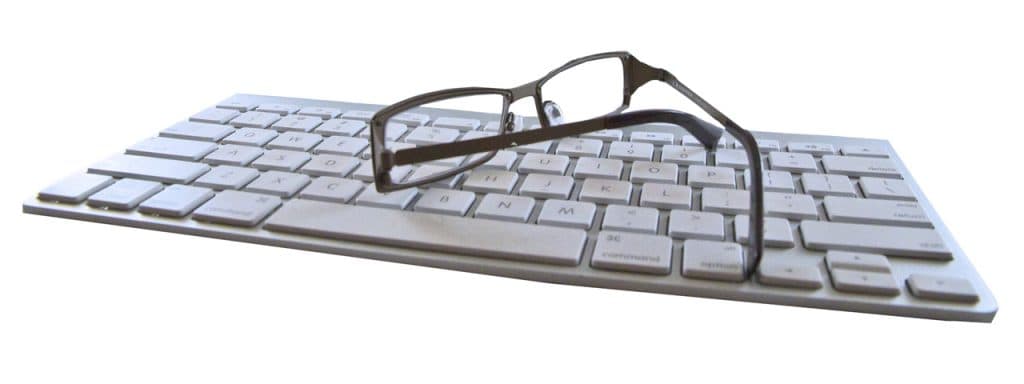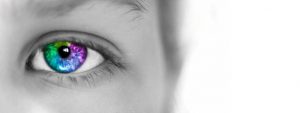Q: What is vision therapy?
A: Vision therapy can be described as physical therapy for the visual system— the brain and eyes.
Vision therapy is remarkably successful in improving binocular vision skills.
Through a series of progressive therapeutic procedures (eye exercises), patients develop or recover normal visual skills. Vision Therapy is designed as an individual and personalized treatment program, often used in conjunction with other treatments such as eyeglasses or eye surgery.
Q: Who can benefit from vision therapy?
A: People of all ages can benefit from vision therapy!
Vision therapy can treat a variety of vision conditions:
- Strabismus (eye turn)
- Amblyopia (lazy eye)
- Convergence insufficiency (eye teaming)
- Saccadic dysfunction (eye tracking)
- Traumatic brain injury (concussion)
Vision therapy can improve the following visual skills:
- Visual acuity
- Stereopsis (3D) binocular fusion
- Eye teaming skills
- Convergence
- Eye tracking
- Focusing skills
- Depth perception
- Visual processing
- Visual memory
- Visual motor integration
- Hand-eye coordination
Q: What is the first step before beginning a vision therapy program?
A: A comprehensive vision exam with an eye doctor experienced in vision therapy, is the first step before beginning a vision therapy program.
Your eye doctor will determine if you can benefit from vision therapy, and how many sessions you will need to see results. Your eye doctor or vision therapist will then design an individualized program, specific to your needs.
Q: Does my child need vision therapy?
A: Many children struggle with reading, learning, and sports performance as a result of vision problems.
If your child is exhibiting any of the signs of a vision problem, they may be a great candidate for vision therapy:
- Reading below grade level
- Skips/repeats lines when reading
- Omits small words when reading
- Poor comprehension
- Difficulty maintaining attention
- Poor handwriting
- Avoids reading or other near vision tasks
- Headaches at the end of the day
- Labeled “lazy” or “learning delayed”
- Diagnosed with ADHD or dyslexia
Q: How does vision therapy work?
A: Vision therapy is performed under the supervision of an eye doctor and vision therapist.
A program of eye exercises will be designed to meet the individual needs of each patient. These exercises, which include interactive games and activities are performed once per week in sessions lasting 30-45 minutes. In addition, homework is given to reinforce what is learned during in-office therapy sessions. Commitment to weekly sessions and therapy homework assignments are essential for optimal results.
Q: Can’t my child just do the therapy at home?
A: No. Vision therapy exercises are performed under the guidance of a trained professional, and monitoring is necessary for success.
Without proper guidance and monitoring, poor visual habits may actually be reinforced.
In addition, vision therapists use specialized computer programs, regulated medical devices (such as lenses and prisms) and other tools which are not available for home practice.
Schedule an appointment with a vision therapy eye doctor near you.
SEE RELATED: Vision Therapy: Glossary of Terms
Q: How long do the benefits of vision therapy last?
A: When the program is complete, the benefits of vision therapy will last a lifetime.
The focusing and eye coordination reflexes should operate effortlessly, when conditioned appropriately. At the end of each therapy program, activities for home practice are prescribed for reinforcement and self-monitoring.
Vision therapy enables the development and recovery of strong visual skills that will prepare children for a lifetime of learning, and provide new opportunities for many adults.
Q: Does vision therapy treat the eye problem or the brain problem?
A: The visual system includes the brain and the eyes— the eyes are actually physical extensions of the brain!
According to eye doctors, most binocular vision conditions are caused by problems within the eye-brain connection— the way that the brain processes the visual information coming in through the eyes, also known as visual processing.
Q: Why is 3D vision important?
A: Many routine tasks and activities rely on 3D vision for accuracy and success.
Some of these activities include:
- Throwing, catching or hitting a ball
- Driving and parking a car
- Planning/building a three-dimensional object
- Threading a needle and sewing
- Reaching out to shake another person’s hand
- Pouring into a container
- Stepping off a curb or step
The loss of binocular depth perception (3D vision) can cause serious vision impairments, and significantly reduce a person’s quality of life.
Q: Can my child outgrow his vision problem?
A: Unfortunately, no.
Children do not grow out of their vision problems— they will just continue to struggle as adults.
Most of the time, the problem will either remain the same, become worse, or rely on adaptations that will make vision therapy at a later date, more difficult.
Q: Is vision therapy new?
A: No, vision therapy has been around for centuries.
Although vision therapy is currently an optometric specialty, it is actually an outgrowth of orthoptics, which was introduced in the late 1800’s.
As doctors became more focused on eyeglasses, medication, and surgery, the benefits of orthoptics were taught to fewer and fewer practitioners. However, in the mid 1950’s optometrists once again began to study orthoptics and pioneered the development of vision therapy.
Q: Is there scientific evidence that vision therapy really works?
A: Yes! Vision therapy has been proven effective for improving many binocular vision conditions.
The Convergence Insufficiency Treatment Trial (CITT) showed that office-based vision therapy is an effective treatment. In addition, numerous published research studies prove the effectiveness of vision therapy for improving reading and learning performance.
If your child presents with any of the signs listed above, vision therapy may be the solution you have been searching for.
LEARN MORE: Guide to Vision and Learning Difficulties
Schedule a comprehensive vision evaluation with your eye doctor to find out if your child can benefit from a program of vision therapy!









